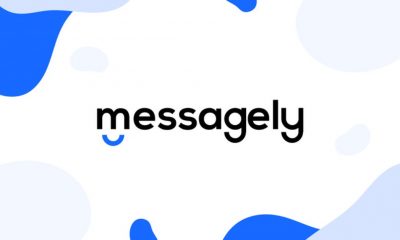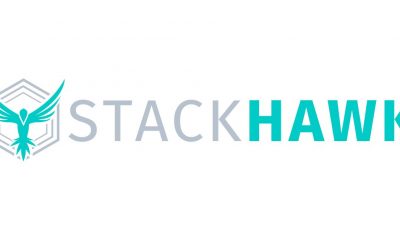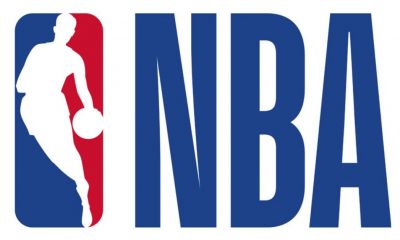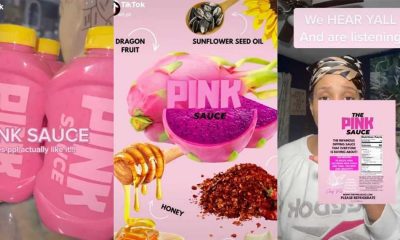Business
Stop Paying For Traditional Advertising
Published
6 years agoon

Everyday I come across companies that are spending tons of money on advertising that is yielding them subpar results. This then makes them believe that advertising does not work. What’s the problem with their strategy? They are using traditional advertising in places where their consumers’ attention is not.
The shift towards digital consumption has significantly grown over the last few years, where most things can now be done on the Internet. Most of our social interactions and the way we consume content is largely taking place through mobile devices as a result of convenience and flexibility. The answer to many of our problems can now be resolved at the touch of a button. Catching up with friends, shopping, binge-watching a TV series, reading the news, or learning a new skill can all be done through mobile device and social apps. Companies that have not innovated themselves to a digital platform are being eliminated by those that have. Of course, not everyone has adopted these mediums as their go-to, some people still rather get their news from a newspaper, or catch up with an old friend at a coffee shop.
However, it is evident that our attention is leaving traditional mediums and continues to shift to the new digital space. So my question to you: if we are spending so much of our time in this digital space, why are we still trying to build businesses and sell products in the old traditional world? Why are big corporations spending their large marketing budgets on expensive traditional advertising when they can be spending a fraction of the price to advertise where our attention is? Not only does the digital world have our attention, but it is cheaper to advertise on, you can directly target your audience, and we receive insightful data that cannot be obtained through traditional forms of advertising. I will really be focusing on Facebook Ads because that is where you can currently find good value right now.
ATTENTION
When it comes down to it, marketing and advertising is about communicating a message to your target audience in the most effective and efficient way possible. It’s all about finding where your consumers are spending most of their time and figuring out how to position yourself in that space.
Billboards are meant to grab the attention of the bored passenger who is staring aimlessly out of the car window and to get glances from the driver. However, this was created when our attention was in the traditional world and before this digital space existed. Today, we have mobile devices that connect us directly to the digital world whenever and wherever. We are no longer bored staring out of car windows, we are on our phones.
Even TV commercials have become less effective than they used to be due to the digital world. We have the ability to stream shows and movies online with no commercial breaks, or we can record television programs that we are interested in seeing to watch at a later time. Much like the billboard, TV commercials were designed when this digital space was non-existent and the only way to ‘skip’ through advertising was by changing the channel. We are no longer consuming television in the traditional scheduled way. Instead of having to pay attention to that commercial we can skip through it (if it’s recorded), we can change the channel, or we can turn to our devices to distract us.
It has become so easy for individuals to be absorbed by their mobile devices whether at home or on-the-go. While this distracts many from traditional advertising, it opens up a whole other realm that holds strong potential when one’s attention is primarily shifted to the digital space. Not only does it allow for a sense of immediate connection, such as real-time conversations on social media during a live award show or sports game, but it is a space that holds opportunity for companies to target users at the right moment.
TARGETING
Digital takes targeting the right audience to an extreme. Unlike traditional methods of print and TV advertising, Facebook, for example, gives companies the upper hand in narrowing down where advertisements will be seen. You have the option to define your audience through key demographics like age and location, or through interests, likes, and/or groups they are part of. With Facebook Ads, you have the ability to showcase your ads to valuable consumers, target those who are interested in your competitors, and even those that work at Company X. This is killer for B2B! If you have a B2B company and know exactly which companies would benefit from your product/service, you have the option to run ads against the employees of that company. There is even the advantage of having creatives positioned differently for Company A and Company B, a strategy that can be worthwhile if done correctly.
One trick that I like to do is that if I know I am going into a meeting with said company, I will run ads against them so that they will become aware of our company and what we provide for our clients. By doing this, I am attempting to sell my services before I step into that meeting and I hope they walk into it already knowing they want to work with me.
PRICING
If you are paying for traditional advertising, you are most likely OVERSPENDING. While these forms of advertising are losing consumer attention, the prices do not reflect that. Digital is a great place to advertise because there does not necessarily have to be an excessive amount of overhead costs like with print and billboards that will cost you material and labour.
One number that I find absolutely insane and a great way to gauge ad value is through CPM (cost per thousand impressions). To advertise on TV you will find yourself paying approximately $25-$30 CPM, while a good chance of that can be saved with Facebook Ads ($5-$10 CPM).
For about one-third of the price, the same audience size can be reached with a more targeted approach. It is important to take advantage of these low costs on Facebook while they last and have your advertising budget used to the best of its potential.
CONVERSIONS + ANALYTICS
Traditional advertising is measured through audience measurement systems and is not as in-depth as digital advertising. Traditional efforts focus on brand awareness with a possible call-to-action, while digital ads have the ability to make better conversions due to convenience. With the click of a button you can send consumers to a product on your website or to sign up for an upcoming event. This allows consumers to remain connected with your company almost instantly.
The insights provided by Facebook Ads allows for user interactions towards advertisements to be tracked (based on the specific CTA being measured, e.g. downloads, signups, purchases). While traditional methods provide you with statistics on average viewership of particular content, Facebook Ads only charge you for what you receive. If your ad is viewed 1,000,000 times, you pay for 1,000,000 impressions, whereas on traditional if a magazine on average sells 100,000 magazines, you pay for that even when this issue only sells 39,000 copies. The same goes with analytics retrieved from video ads. Video analytics provide you with concrete and valuable data that can show where your viewers drop off (such as in the first 3 seconds), giving you the opportunity to address the problem at hand. You have the ability to test your ads for relatively cheap and can identify what needs to be fixed. Don’t blow your budget on something that may not produce quantifiable results.
SOCIAL MEDIA
Advertising campaigns done through social media connects the audience to a brand’s page. You not only get to capture attention from your target audience, but, if done properly, this will turn them into loyal followers. It’s harder for traditional methods to directly and easily convert consumers into followers and retain that same audience in the long run. By using digital, advertising to a target audience is more than getting your company’s name or product at the surface. The next step relies on the company’s responsibility to provide valuable and informational content on their socials to keep their followers interested and establish a meaningful connection.
Having a strong social media presence alongside digital ads gives your company a more reputable presence. Customers or potential customers choose to follow you on your socials where it is not forced or expected. Instead, these customers see the value in your brand/company and make the decision to reach out to you (even if that reaching out is a simple like, share, or comment). This kind of engagement is crucial in building sentiment surrounding your brand in the digital world.
Don’t get comfortable doing things simply because they worked in the past or because they are considered safe. I want you to be able to recognize overpricing and attention shifts so that you will be able to identify the next best place to advertise and not get stuck in the “old ways”. One day, our attention will start to shift away from digital and I’m sure there will still be people paying to advertise there. Always look to the future and play the long game.
You may like
Messagely – Messaging, But Modern
StackHawk – Security At The Speed of Light
Penji partners with Nonprofits to provide $1 graphic design
‘Or Die Trying’ Webseries Empowering Millennials
BumpOut: The Expandable Portable Speaker
Content Creation 101: How To Create, Distribute, And Monetize Your Content
Business
Top 10 Best Places to Buy a Mid Century Modern Office Chair
Published
1 week agoon
July 4, 2025
What was once old is new again: mid century modern is back in style. From architecture to furniture, the postwar look is in, and the hype extends all the way to office chairs.
Do you need a mid century modern office chair in your life? If so, there’s plenty to choose from. Your office chair should be tailored to your style, whether you like luxury, utility, or something in between.
That’s why we’ve put together our 10 favorite places to find your ideal mid century modern office chair.
What is mid century modern design?
After World War II, spirits were high in the US, and new technology was taking the country by storm. Mid century modern refers to the design concepts that came about during this time.
As opposed to the frilly, ornate designs of classical furnishings, mid century modern designs are angular, material, and functional. Wood is a common design element, especially teak. Mid century modern furniture may also have materials like glass, vinyl, and metal. Designs are simple and geometric, with bold accent colors to make them pop.
The mid century modern aesthetic never really went away, but it’s made a noted comeback in recent years. Some have chalked it up to Boomer and Gen X nostalgia, others point to mid-century-set shows like Mad Men and The Marvelous Mrs. Maisel.
Why should I buy a mid century modern office chair?
Mid century modern is the perfect fusion of style and utility. If you want to cultivate an office space that commands respect without being ostentatious, mid century modern is the style for you.
When it comes to office chairs, an MCM one is often made with sturdy wood and vinyl. They combine the ergonomics of a modern office chair with old-fashioned grace.
If you’re concerned with utility and utility only, a more bog-standard office chair may suit you. But a mid century modern office chair is great for someone who wants to wow colleagues with a mature, thoughtful business space.
Where can I get a mid century modern office chair?
1) Wayfair
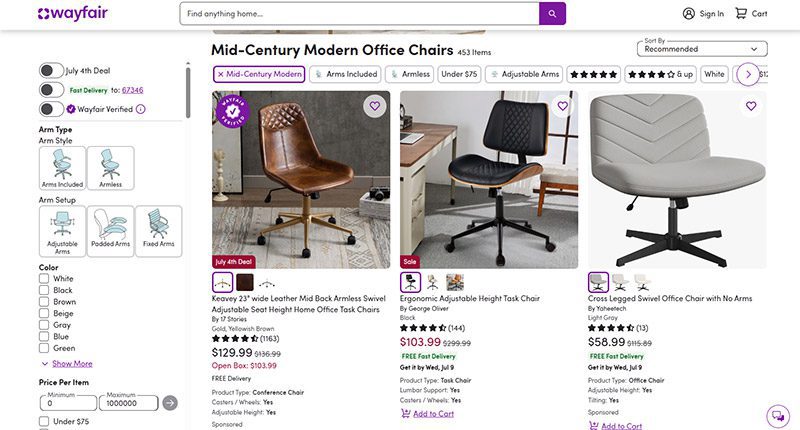
When it comes to furniture, Wayfair offers the best of both worlds. Their goods, including their mid century modern office chairs, are stylish and affordable. You can get a sturdy task chair for less than $100 or a more distinguished seat for less than $350.
MCM office chair examples: Dovray ($126), Bradford ($139), Lithonia ($133)
2) France & Son

Wayfair’s chairs are affordable, but France & Son is the perfect option for luxury shoppers. Their mid century modern office chairs are robust and sleekly designed. If you dress to impress and enjoy the finer things in life, these are the chairs for you.
MCM office chair example: Brooks ($695)
3) Houzz
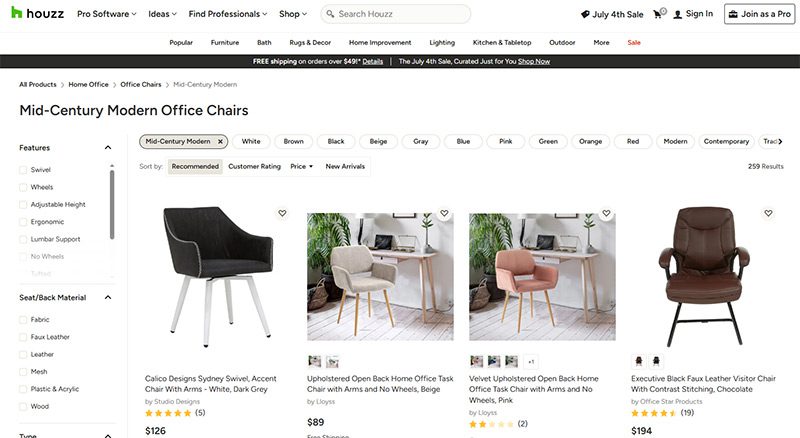
Started as a community for people to share home decor tips, Houzz has become a great ecommerce platform for finding stylish furniture. They’re more known for home decor than desk chairs, but they have plenty of great, affordable finds if you know where to look.
MCM office chair examples: Arvilla ($173), Rathburn ($259)
4) Laura Davidson
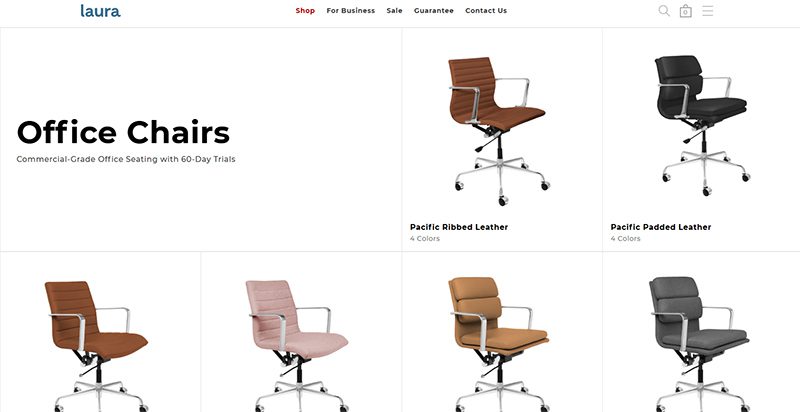
The Laura Davidson collection offers a fairly limited selection of classic office furniture. Still, there’s a reason they’re trusted by big-wigs like Apple, Disney, and Salesforce. Their chairs are sturdy and beautifully designed, reimagining classic Eames and Knoll designs.
MCM office chair examples: Rockefeller ($275), SOHO II Soft Pad ($450)
5) Icons of Manhattan
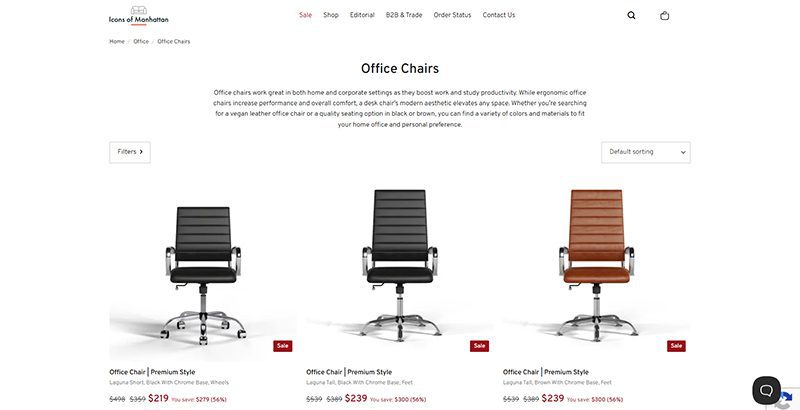
Icons of Manhattan has a simple philosophy: do one thing, and do it right. Their office chairs are handcrafted from premium materials and tailored to a mid-century modern style. If you want that Mad Men energy in your office (hopefully with a lot less angst), these are the chairs for you.
MCM office chair example: Ribbed Medium ($219)
6) Amazon
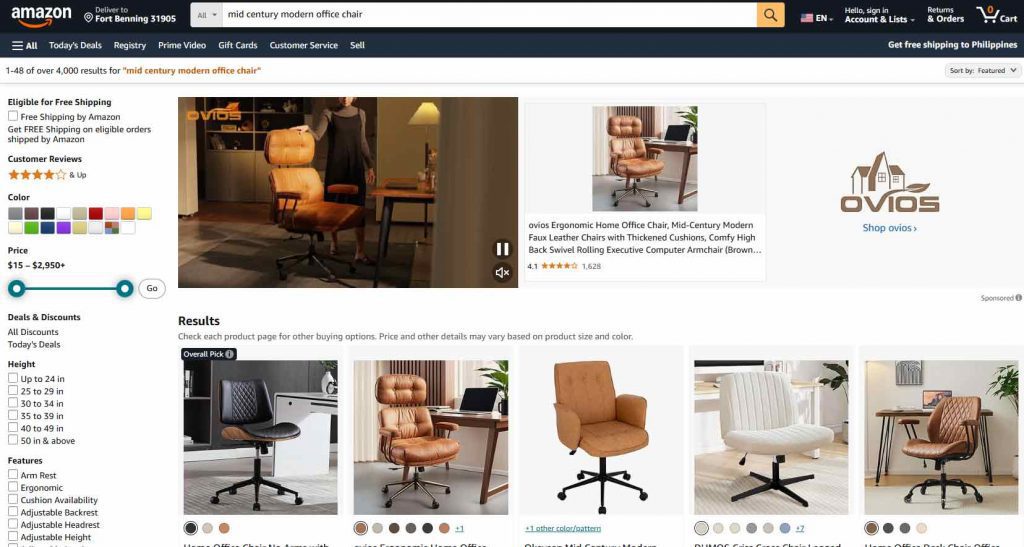
Yes, the internet’s premier shopping destination has a robust collection of mid century modern office chairs. Like with most products, their selection of seats is vast and can be hit or miss. Still, they’ve got stunning chairs available for any style, whether you care about comfort, class, or ergonomics.
MCM office chair examples: IDS Home Modern ($219), Art Leon MCM Swivel ($139)
7) AllModern
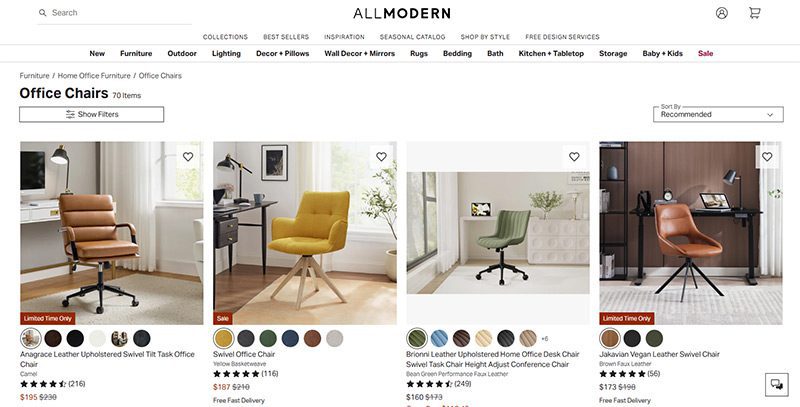
AllModern’s collection of desk chairs and other furniture truly embodies the mid century modern spirit. Their work is tight, angular, and functional above all. They’re part of the Wayfair family and they traffic in a number of modern styles, but their sleek chairs are perfect for any mid century modern space.
MCM office chair examples: Frederick ($229), Kealey ($349)
8) Overstock

Overstock is known as a one-stop shop for quality home goods at sub-wholesale prices. If you want a spiffy mid century modern office chair that won’t break the bank, they’re the first place to look. While they’re somewhat less reliable than the more upscale platforms on this list, their selection is massive.
MCM office chair example: Joseph Modern ($163)
9) Walmart
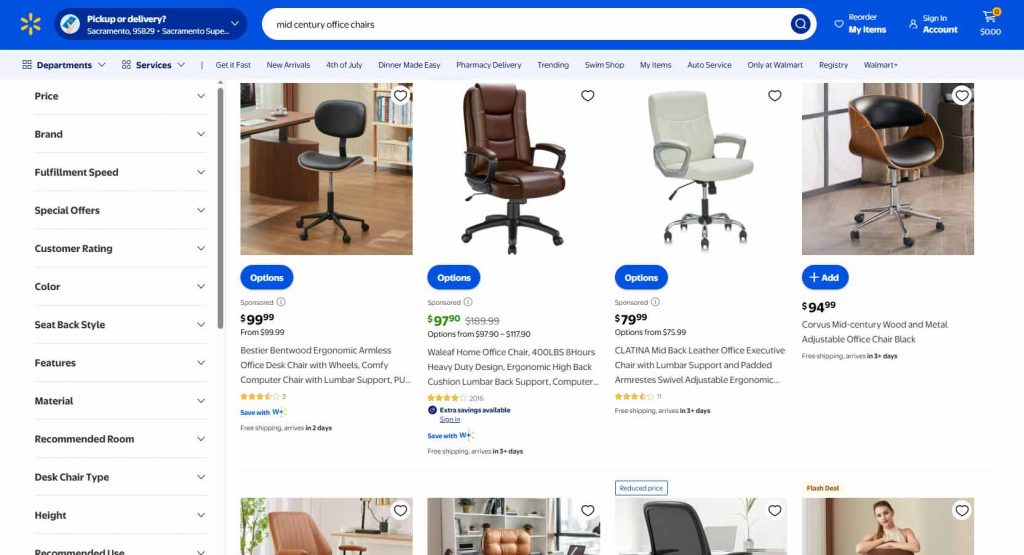
Hayneedle’s selection of mid-century modern office chairs falls somewhere between the minimal Laura Davidson and the endless Amazon catalog. Their array of mid-century designs is affordable and versatile, with chairs that match almost any style. While they may be part of the Walmart family, these chairs are anything but second-rate.
MCM office chair example: Waleaf ($97)
10) Target
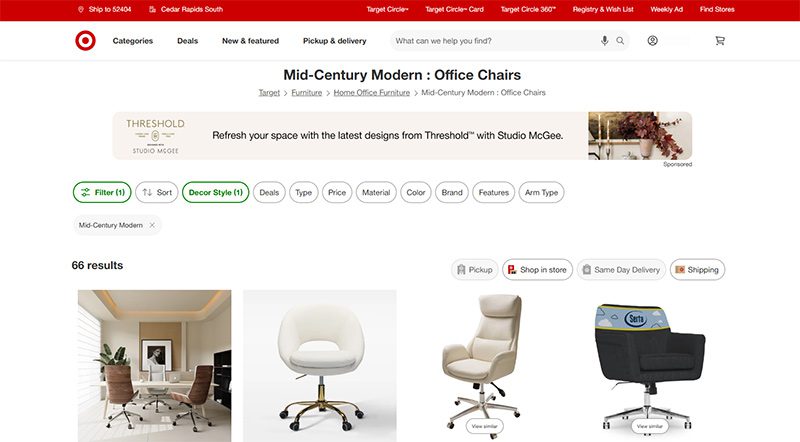
Why splurge when you can save? As usual, Target is a hidden gem, offering a sturdy selection of mid century modern office chairs for some of the cheapest prices out there. Many of the chairs they offer are from the same designers as these other stores—Christopher Knight, LumiSource, Armen Living, etc.—at reduced prices.
MCM office chair example: Lombardi ($136)

A quality payroll service is one of the most invaluable tools any entrepreneur can have. Whether you’re a small business owner or an HR manager, paying your employees on time is crucial. This makes choosing a service even more weighty, after all, it is a heavy administrative burden. The good thing is, you can outsource this duty to an online payroll processor.
According to statistics, 49% of workers begin a new job search after just two paycheck errors, and with 65% of workers living paycheck to paycheck, it’s more important than ever to ensure an efficient, effective payroll process.
These services can save you precious time and mitigate potential issues. To make it easy for you to choose, we listed the best online payroll services for 2025.
Top 5 Online Payroll Services
Gusto
Gusto is a great option for both new and experienced payroll administrators, boasting an incredibly clean user interface and a first-rate payroll setup. Gusto lets you manage your employee’s time off (vacation and sick pay), company health insurance, and worker’s comp. Gusto offers excellent mobile access, too. This allows employees to manage aspects of their Gusto profiles, view payday insights, and access Gusto Wallet financial tools.
Gusto offers four tiers of membership, the most affordable of which is the Contractor’s Only plan, which offers unlimited U.S.-based and global contractor payments, supporting more than 100 countries, plus 1099 creation and filing at a rate of $6 per person per month with no base price.
The other three are Simple, Plus, and Premium. Here’s a deeper look into each plan:
Simple
Price:
$40/mo + $6/mo per person
Plan details:
- Full-service single-state payroll including W-2s and 1099s
- Employee profiles and self-service
- Basic hiring and onboarding tools
- Gusto-brokered health insurance administration
- Employee financial benefits
- Payroll and time-off reports
- Custom admin permissions
- Integrations for accounting, time tracking, expense management, and more
Plus
Price:
$80/mo + $12/mo per person
Plan details:
(All Simple plan features +)
- Full-service multi-state payroll including W-2s and 1099s
- Next-day direct deposit
- Advanced hiring and onboarding tools
- PTO management and policies
- Time tracking and project tracking
- Workforce costing and custom reports
- Team management tools
- Full support
Premium
Price:
Bespoke pricing, reach out for a personalized quote
Plan details:
(All Plus plan features +)
- HR Resource Center
- Compliance alerts
- Access to certified HR experts
- Full-service payroll migration and account setup
- Health insurance broker integration
- R&D tax credit discount
- Waived fees and exclusive pricing
- Performance reviews
- Employee surveys and insights
- Dedicated support
QuickBooks Online Payroll
Founded in 1983, Intuit is a California-based financial software company. Since its inception, Intuit has developed into one of the best-known providers of accounting software. Their online payroll service, QuickBooks, includes the essential features you need to run payroll.
QuickBooks offers three tiers of membership. The least expensive membership covers basic accounting features, such as invoices. For more features, check out the Essentials and Plus memberships. Each plan’s features are as follows:
QuickBooks Simple Start (2025)
- Price: $38/month for 1 user
- Best for: Freelancers and small teams with basic payroll needs
Features:
- Automated bookkeeping
- 5 free ACH bank transfers/mo for bills
QuickBooks Essentials (2025)
- Price: $75/month for 3 users
- Best for: Small businesses needing deeper financial tracking
Features:
- Includes all Simple Start features, plus:
- Recurring invoices
QuickBooks Plus (2025)
- Price: $115/month for 5 users
- Best for: Growing businesses with HR and compliance needs
Features:
- Includes all Essentials features, plus:
- AI-powered profit & loss insights
- Anomaly detection and resolution
- Budgeting
QuickBooks Advanced (2025)
- Price: $275/month for 25 users
- Best for: Established businesses with HR and compliance needs
Features:
- Includes all Plus features, plus:
- Custom user management and permissions
- Custom report builder
- Data sync with Excel
- Revenue recognition
- Forecasting
OnPay
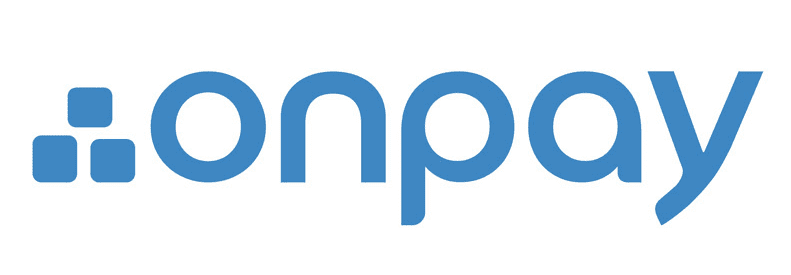
OnPay is a cloud-based full-service payroll processing system capable of running payroll according to a preset schedule, automatically disbursing wages, and calculating and withholding taxes.
OnPay can sync up with several other software your team is already using, making it easy to integrate the service into your team’s system. Another benefit of OnPays model is the simple, transparent pricing structure. No tiers; just one base rate.
Pricing:
$49/mo + $6/mo per employee
SurePayroll

SurePayroll’s award-winning service supports W-2 employees and 1099 contractors. Additionally, it handles 401(k) deductions and manages flexible spending accounts (FSA) and health savings accounts (HSA).
SurePayroll also offers a mobile app— available on both Apple and Android devices.
SurePayroll offers live support through its United States-based support team through chat, email, or phone.
Small Business Payroll
- Price: No Tax Filing: $20/month + $4 per employee, Full Service: $29/month + $7 per employee
- Best for: Small businesses and startups
Features:
- We file and deposit your federal and state taxes!
- Run payroll in 3 simple steps
- Schedule payroll to run automatically
- Unlimited payroll runs and free 2-day direct deposit
- Reports and pay stubs are available online 24/7
- Supports W-2 employees and 1099 contractors
Nanny & Household Payroll
- Price: Full-Service Household, $39/month, includes 1 employee, $10 per additional employee
Best for: Homeowners
Features:
- Signature-ready Schedule H
- We file & deposit your federal and state taxes!
- Run payroll in 3 simple steps
- Schedule payroll to run automatically
- Unlimited payroll runs and free 2-day direct deposit
- Reports & paystubs available online 24/7
- Supports W-2 employees & 1099 contractors
Be sure to choose a payroll service that works for your business, and provides you with the peace of mind that comes with a reliable bookkeeping system. Your employees will thank you.

Merck is currently in talks to acquire Seagen, a biotech company. The Wall Street Journal reports that the transaction is valued at $40 billion. And what happens if Merck acquires Seagen, and how would this acquisition benefit cancer research and treatment? Read more about the Merck Seagen buyout here.
Merck Seagen Buyout
Merck and Seagen are still deciding on their share prices. So far, talks have yet to reach an agreement on $200 per share. Both companies want to settle and finalize their deals before Merck announces its quarterly earnings on July 28. At the time of writing, Seagen’s stock was at $176.19.
With an estimated market value of $235 billion, Merck is looking to expand its presence in the cancer treatment space. The Merck Seagen Buyout could play a major role in that strategy. Since Seagen specializes in targeted cancer therapies, the acquisition would give Merck access to a broader range of oncology products.
Shareholder reactions to the new deal are overwhelmingly positive, and the stocks have been up since talks about the deal have been made public.
But this is not the first time that Merck and Seagen have made the news. Back in 2020, they collaborated because of cancer treatments. Seagen has a drug conjugate (ladiratuzumab vedotin) which would be used in conjunction with Merck’s Keytruda.
Merck reveals that Keytruda is its highest-selling product. It’s immunotherapy for cancer.
And this deal could help Merck offset the possibility of reduced sales because it will lose patent protection in 2028.
As promising as this deal is, there could be scrutiny from antitrust officials since there might be a litigation case from the Federal Trade Commission or Justice Department.
The Seagen buyout isn’t the only deal Merck has made recently. They’ve been busy closing another deal, but with Orion too.
Seagen
As a cancer biotech company, Seagen has therapies to ensure that patients benefit from the treatment and reduce any adverse side effects. Their treatments involve the therapy attacking tumors with toxins.
Merck partnering with Seagen isn’t a bad idea considering that Seagen made $1.4 billion in sales in 2021, most of it coming from Adcetris and Padcev (a treatment for urothelial cancers).
Merck-Orion Deal
In the middle of the Merck Seagen Buyout, Merck has recently partnered with Orion for the ODM-208 and other drugs. These drugs are related to the production of steroids. Orion found how it can combat hormone-dependent cancers and further developed this inhibitor.
Their deal includes that they should develop ODM-208 and promote it to the public together. And Orion will receive a $290 million payment from Merck.
Although they’re co-developing and marketing the new inhibitor, Orion will oversee the manufacturing side.
Co-developing the ODM-208 can help Merck with its current research and treatments for prostate cancer. President and CEO of Orion, Timo Lappalainen, says that this partnership will benefit Merck’s goals of treating cancer worldwide.
Other Ventures: Merck’s Role in the Pandemic
You may have heard about COVID-19 pills, which are a form of treatment for those diagnosed with mild to moderate COVID-19. Merck introduced an antiviral COVID-19 pill to the public. The name: Molnupiravir.
The COVID-19 pill is not a replacement for a vaccination. Instead, it stops the replication of the COVID-19 genetic code and keeps the patient out of the hospital. Not yet FDA-approved, Molnupiravir has been authorized for emergency use since December 23, 2021.
And for other stories, read more here at Owner’s Mag!

What Is Tiktok Pink Sauce? The Viral Condiment, Explained

Did You Drop Your Smartphone in The Ocean? Here’s How to Retrieve It

Gift Guide: 25 Best Gifts for Women for All Occasions

History of the NBA: The Success Behind the Big League

Demio SaaS 2025 Review: Features, Pricing, Pros & Cons

Top 12 Uses for The Metaverse That Will Change Your Life

Top 10 Best Places to Buy a Mid Century Modern Office Chair

Top 10 Best Places to Buy a Mid Century Modern Office Chair

History of the NBA: The Success Behind the Big League

8 Best Equipment for YouTube Every Content Creator Needs

Demio SaaS 2025 Review: Features, Pricing, Pros & Cons

Did You Drop Your Smartphone in The Ocean? Here’s How to Retrieve It

Top 10 Small Business Organization Tools for 2025

Top 12 Uses for The Metaverse That Will Change Your Life
Trending
- Entertainment1 day ago
History of the NBA: The Success Behind the Big League
- Reviews2 days ago
Demio SaaS 2025 Review: Features, Pricing, Pros & Cons
- Lifestyle19 hours ago
Did You Drop Your Smartphone in The Ocean? Here’s How to Retrieve It
- Lifestyle1 day ago
Gift Guide: 25 Best Gifts for Women for All Occasions
- Top Stories19 hours ago
What Is Tiktok Pink Sauce? The Viral Condiment, Explained

